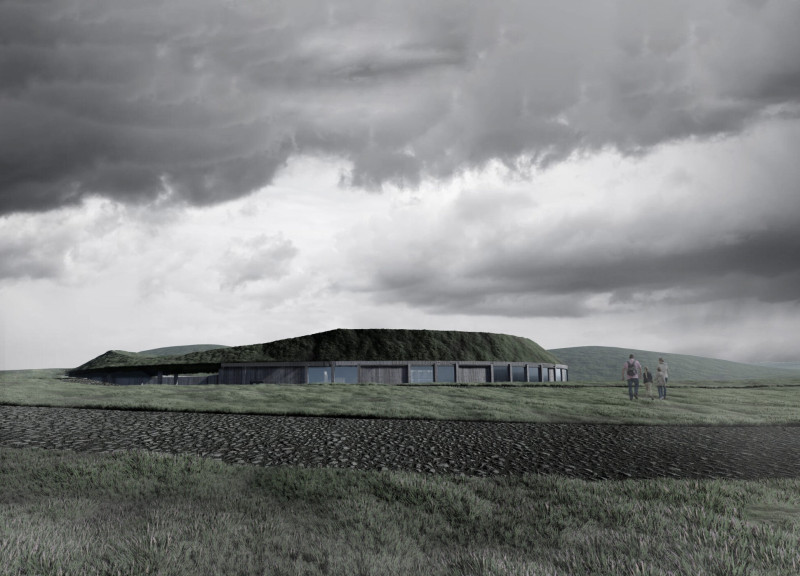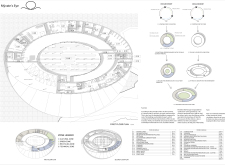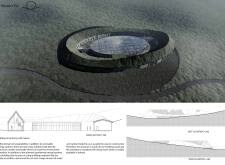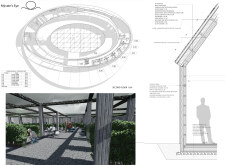5 key facts about this project
Mývatn's Eye is located near Lake Mývatn in Iceland. This building stands as an extension of the landscape, carefully designed to connect with the environment. It serves multiple functions and emphasizes how architecture can blend with nature. The overall design concept focuses on enhancing the natural beauty of the area while providing spaces for visitors to engage with their surroundings.
Concept and Integration
The design reflects environmental integration. It features soft lines and organic shapes that follow the curves of the landscape. The building is arranged to create various viewpoints that frame impressive sights like Lake Mývatn and Vindbelgjarfjall. Each vantage point is intentional, inviting people to experience a different perspective of the landscape, creating a strong link between the building and the natural world.
Functionality and Sustainability
Mývatn's Eye uses ideas from a circular economy. It organizes its spaces into sections focused on production, usage, and recycling of resources. The greenhouse is central to this idea, as it produces resources for the visitors while also allowing for the recycling of material leftovers. This design promotes sustainability and highlights a commitment to environmental care and resource management.
Material Choices
Local architectural traditions influence the material choices. The design incorporates stone and wood, which reflect the region and support low-emission construction. Additionally, sheep wool insulation is used to enhance energy efficiency and sustainability. By using locally sourced materials, the building aligns with its environment while also being conscious of its ecological impact.
A striking feature of the greenhouse is its elliptical shape, which resembles an eye. This focal point not only enhances the visual appeal of the building but also serves to reconnect occupants with the surrounding nature. It represents the ongoing relationship between the built form and the landscape, allowing for a focus on observation and appreciation of the natural environment.





















































